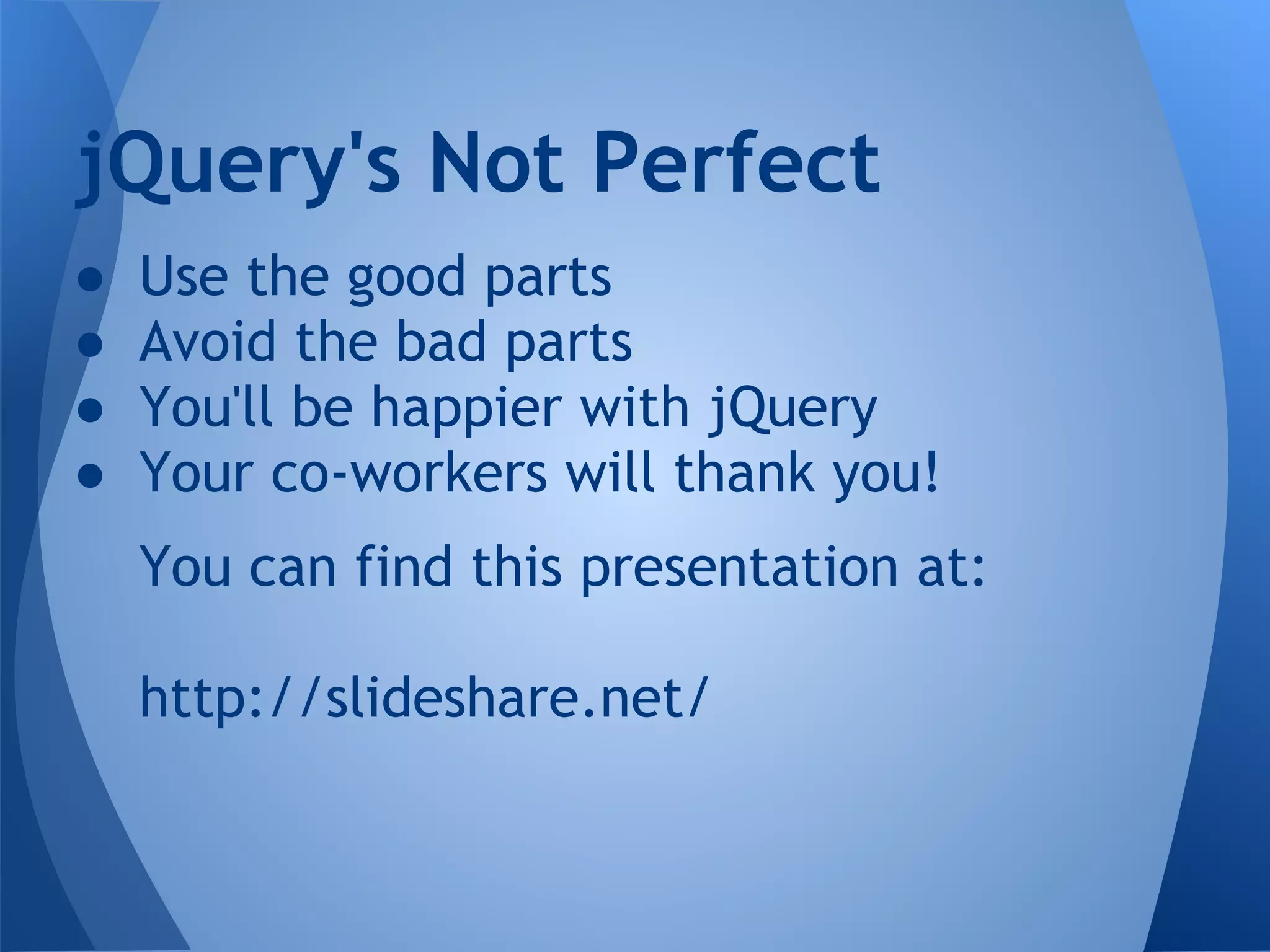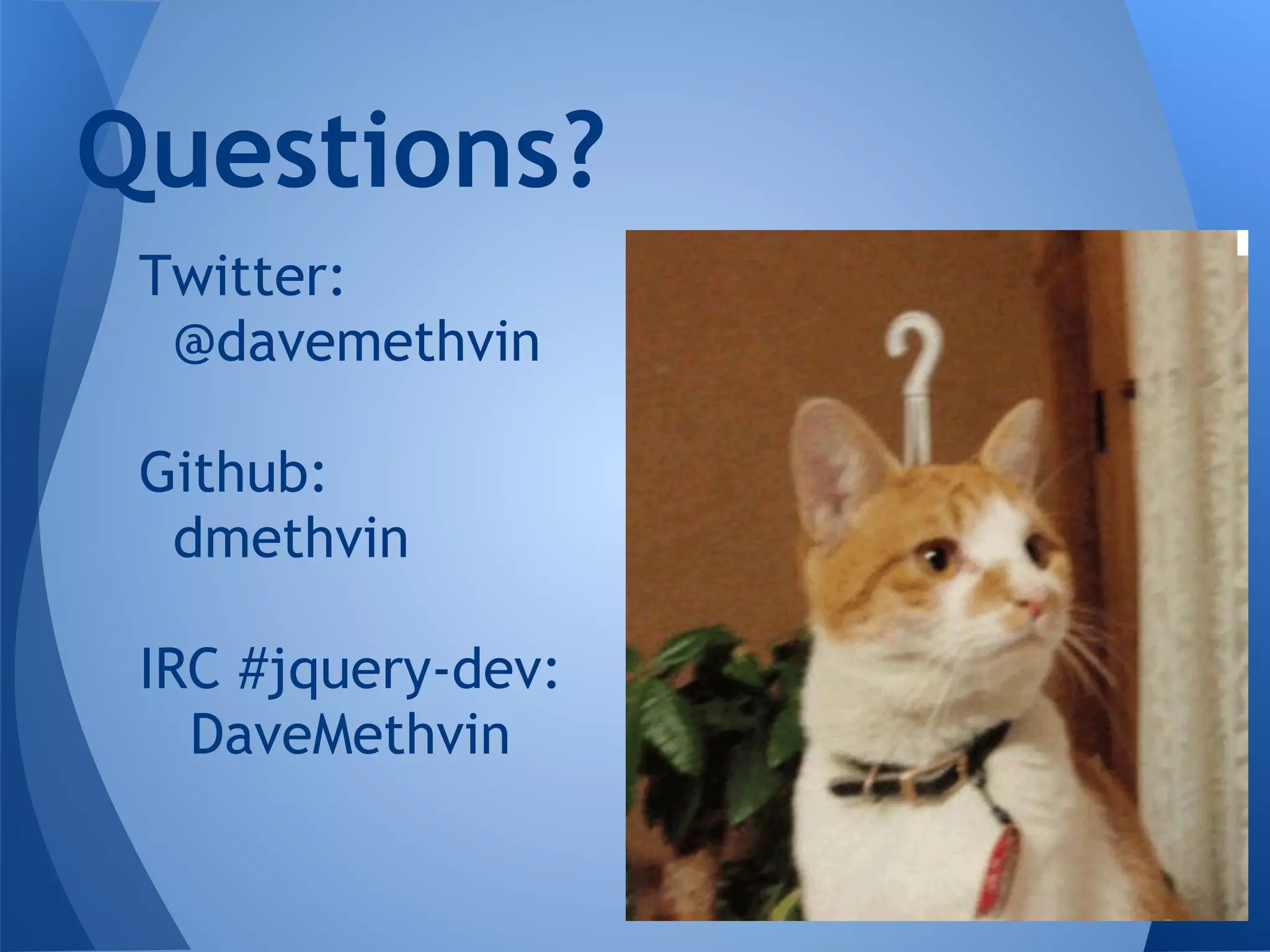The document discusses the evolution of jQuery and highlights features developers should avoid to prevent fragile, hard-to-understand, and slow code in large projects. It emphasizes the importance of using native JavaScript or W3C APIs when appropriate, and advances in new jQuery versions aimed at improving performance and user experience, like removing support for older browsers and deprecated features. The document also raises awareness about potential pitfalls in using jQuery, particularly around AJAX operations and creating HTML, urging developers to validate input and stick to best practices.
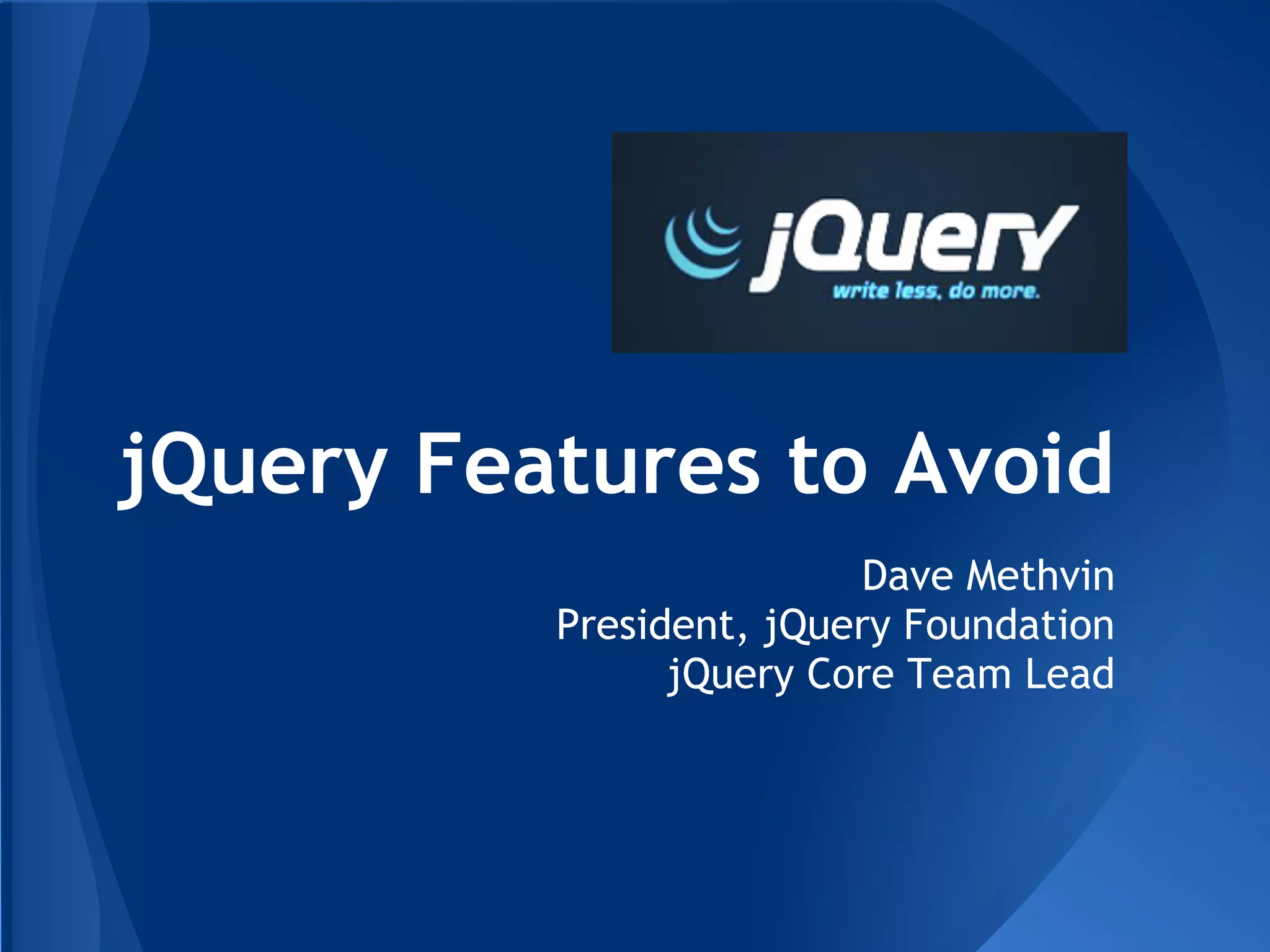


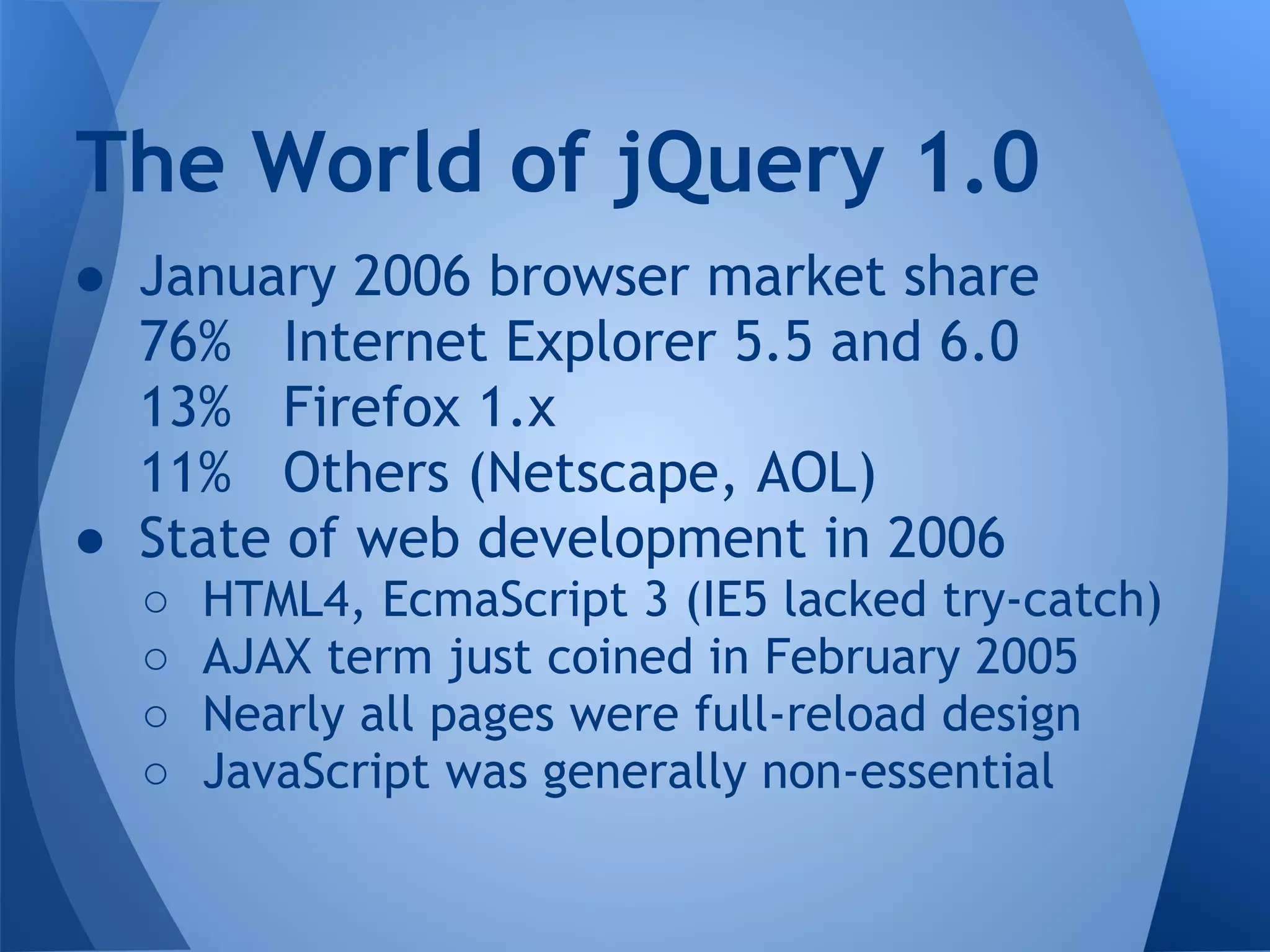

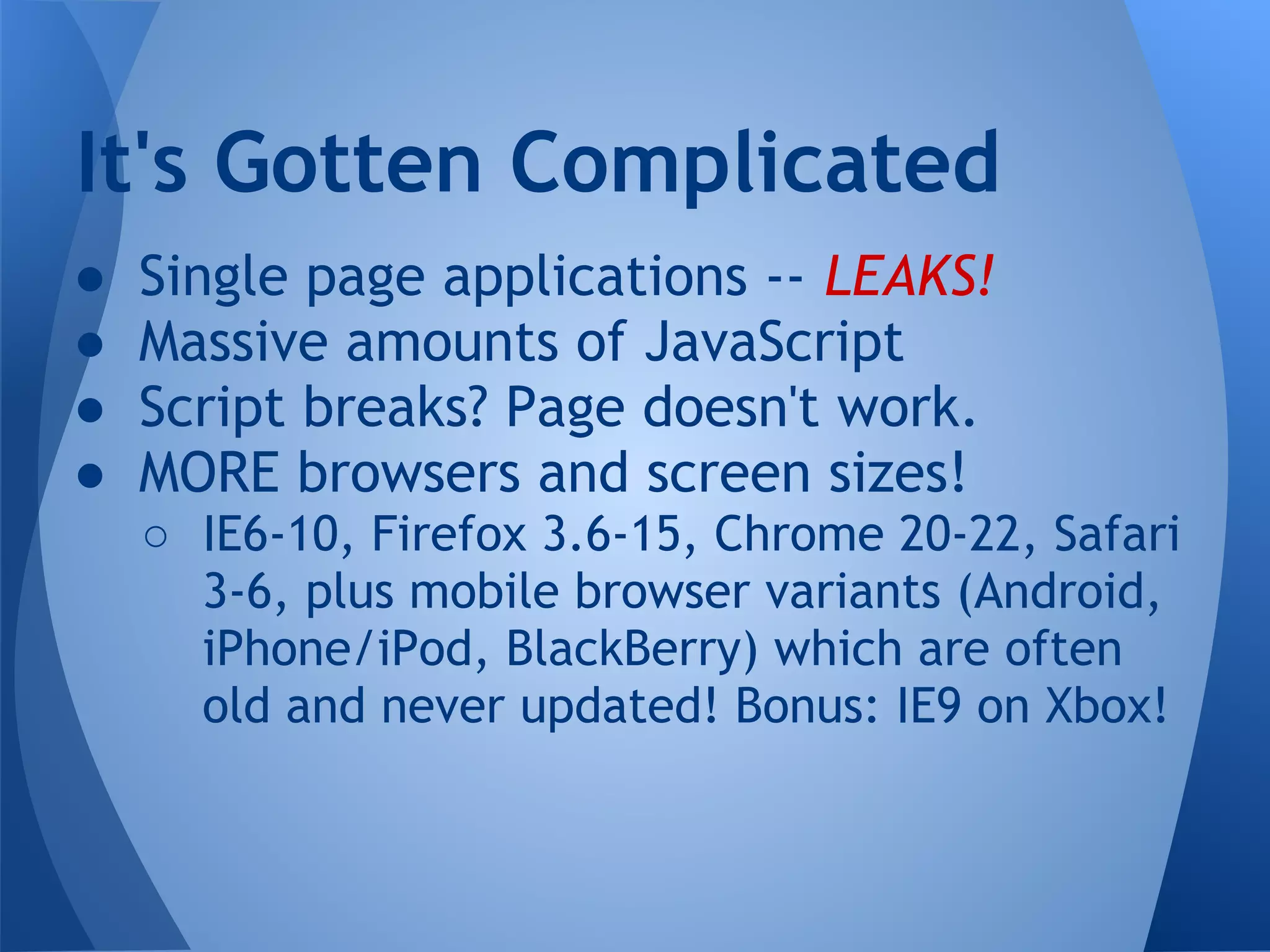




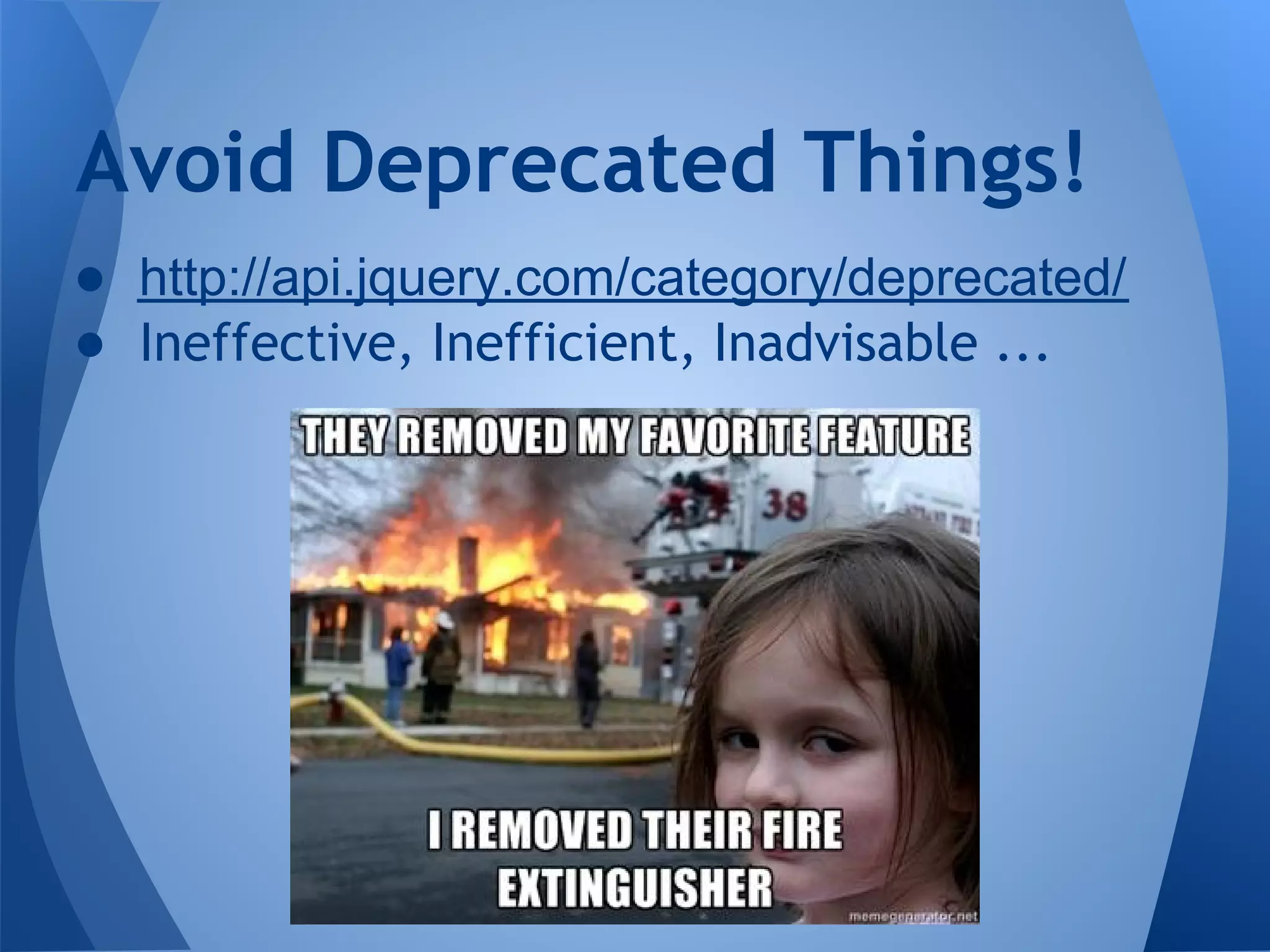
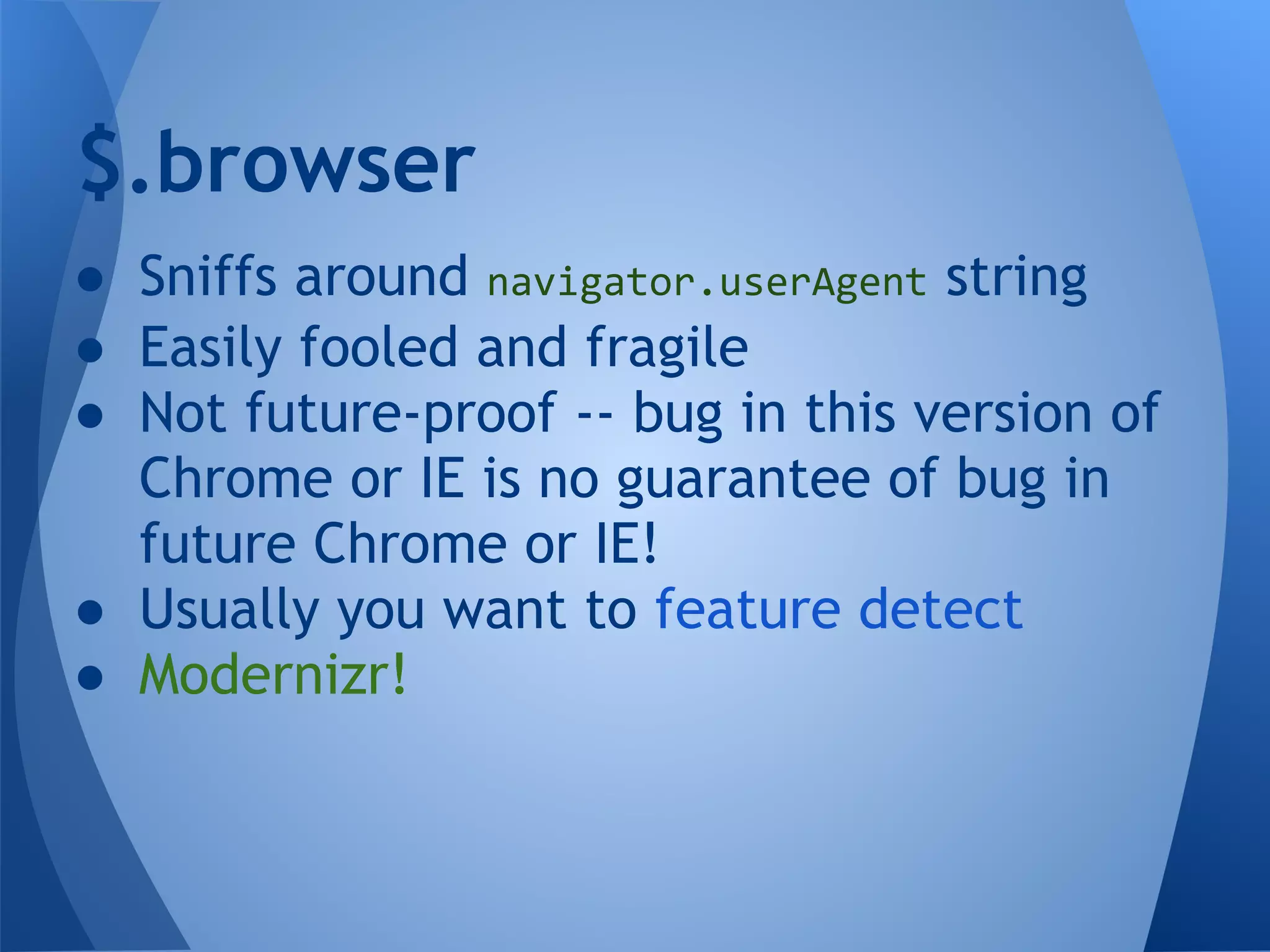

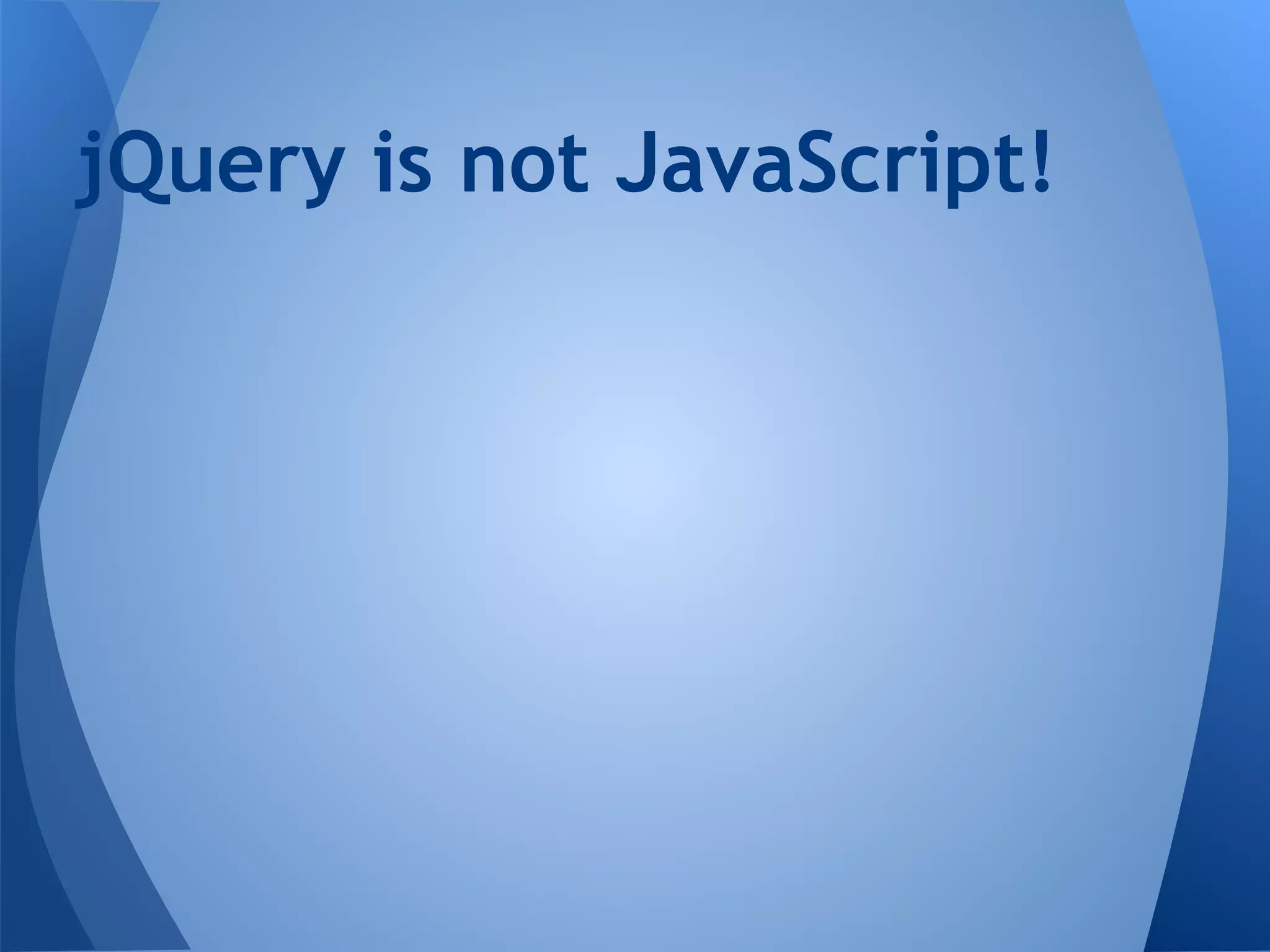
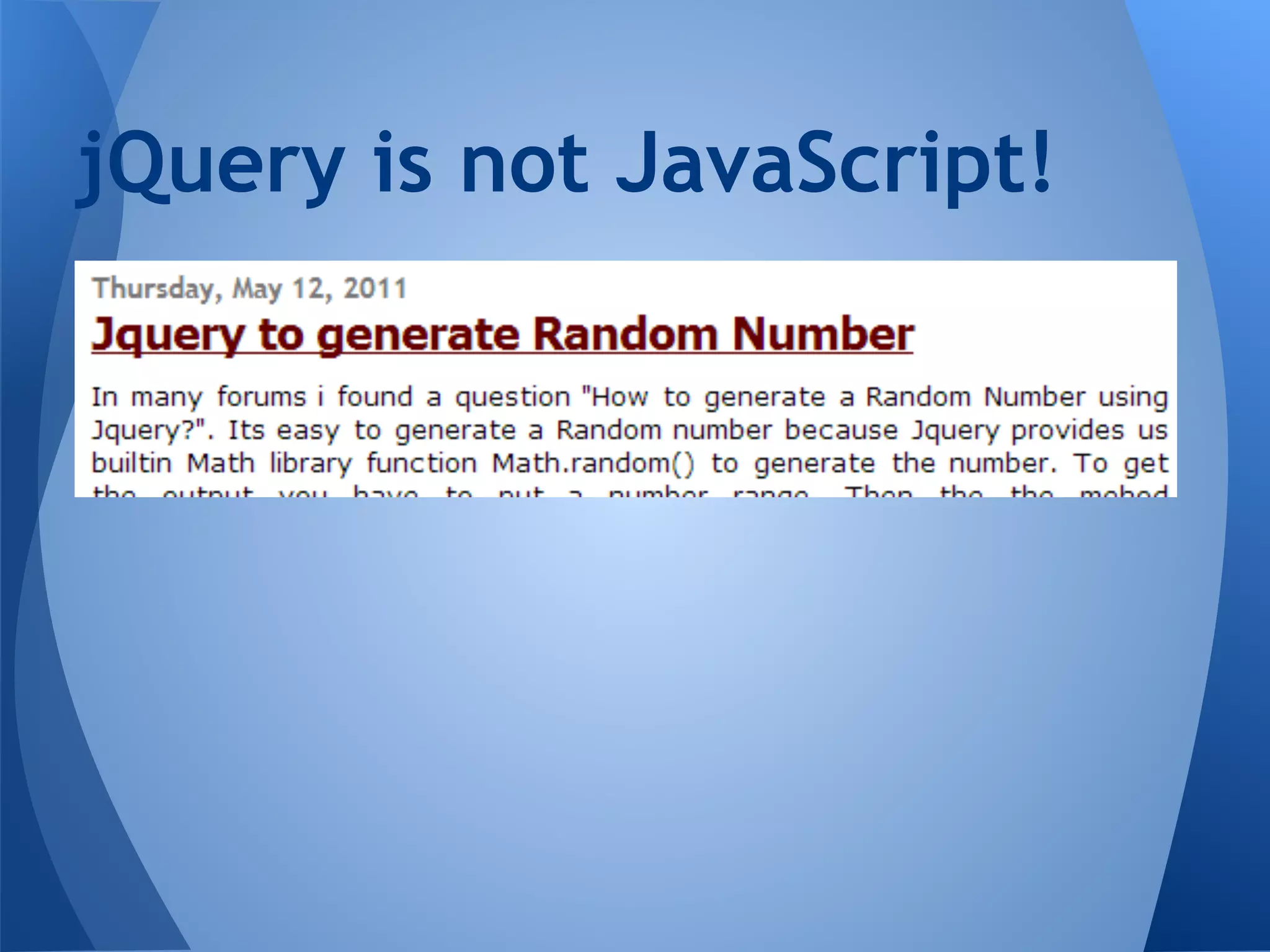
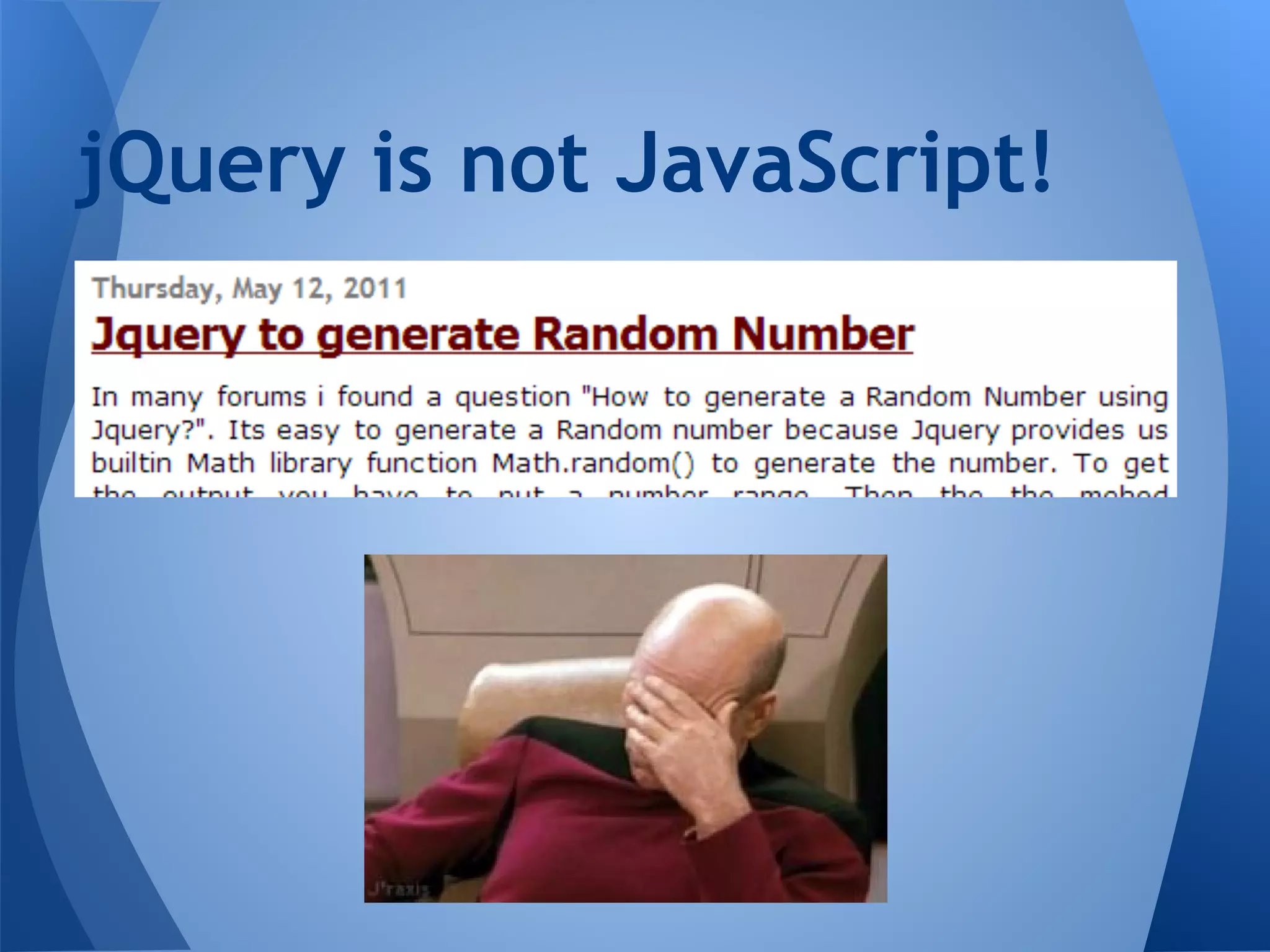

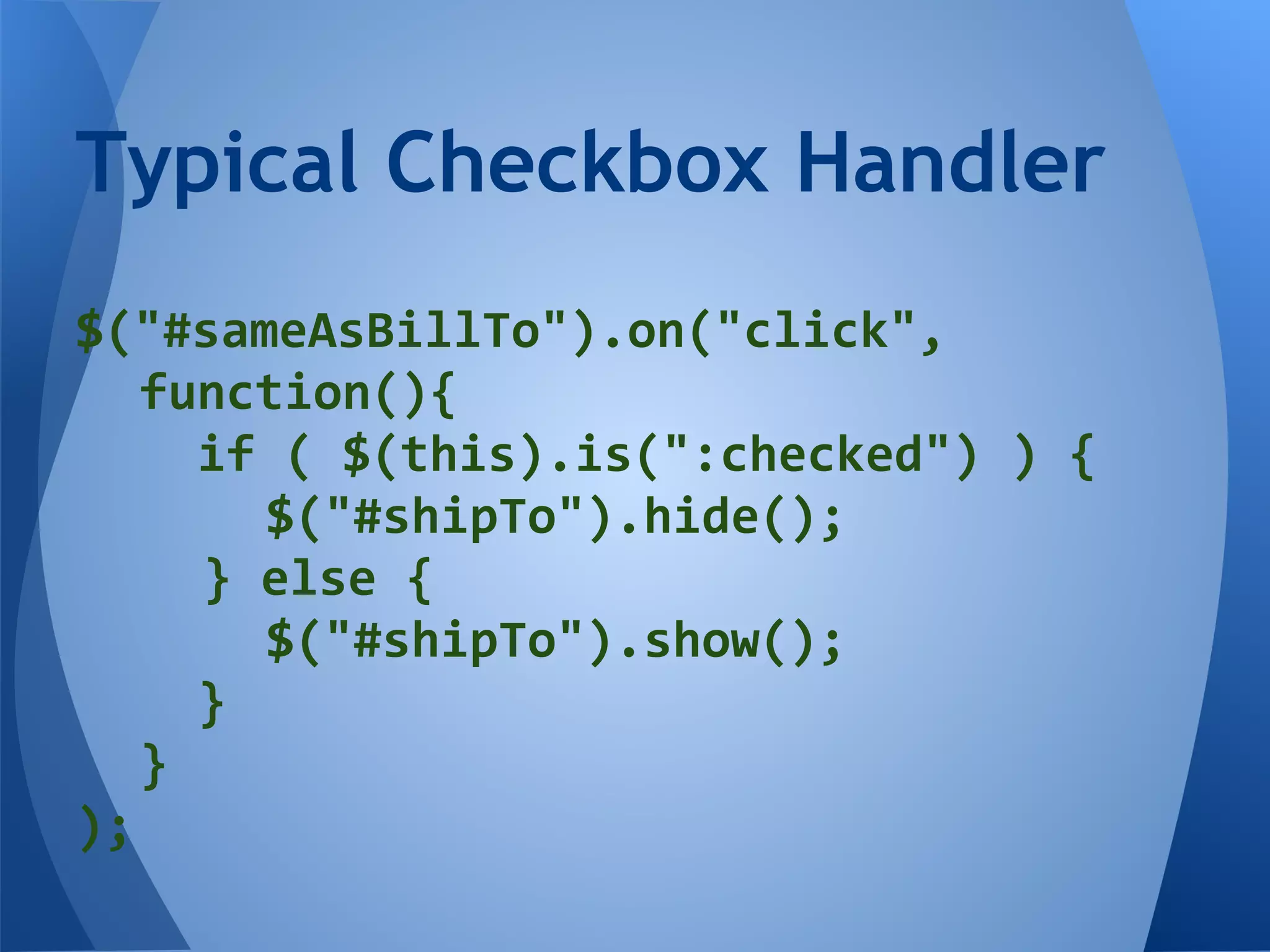


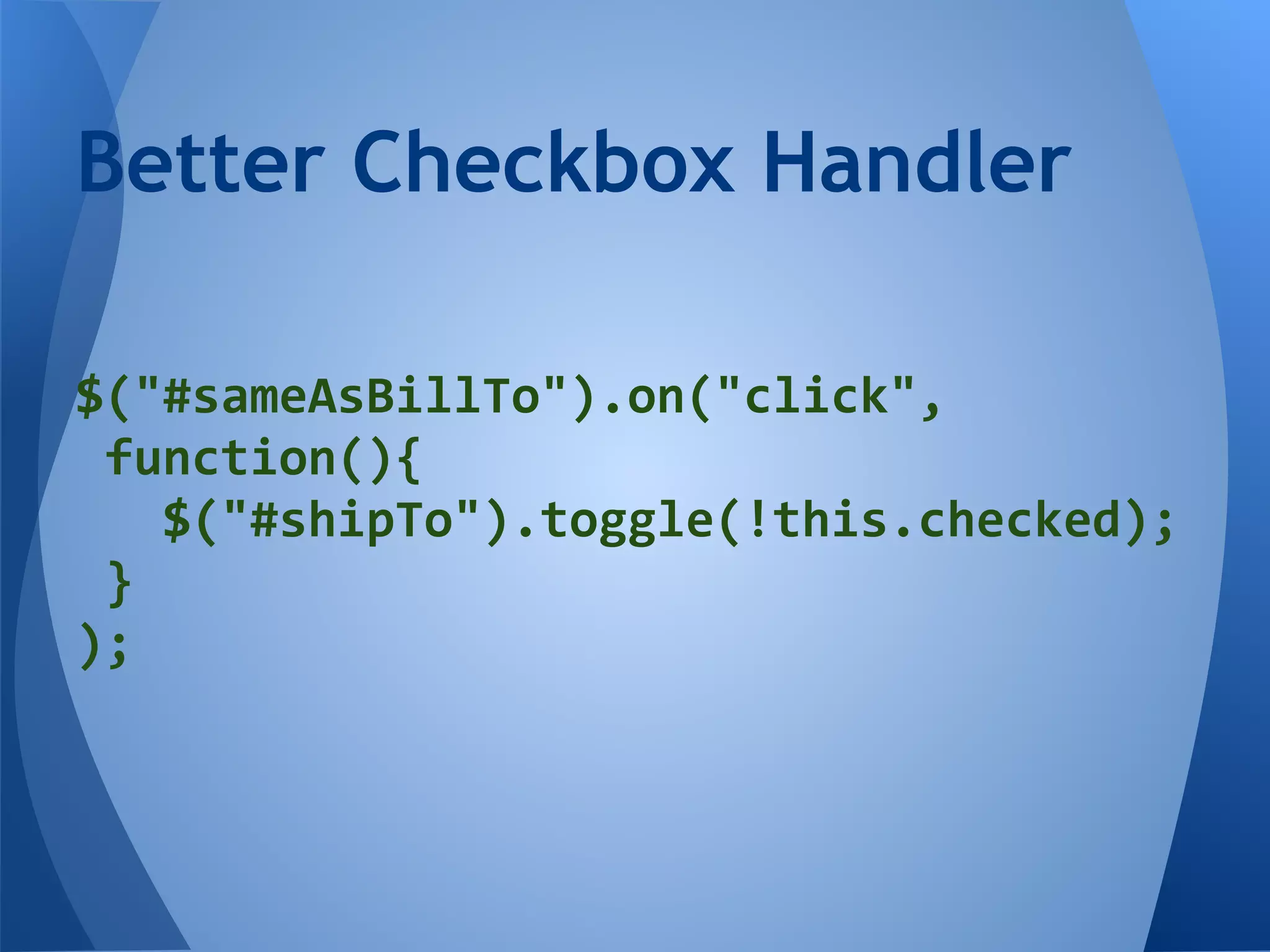
![Use W3C CSS Selectors Selector extension Use this (W3C CSS) :checkbox, :radio, : input[type=X] text, :image, :file, : reset :button button, input[type=button] :header h1, h2, h3, h4, h5 :first :first-child or .first() :last :last-child or .last()](https://image.slidesharecdn.com/jqueryfeaturestoavoid-121115165642-phpapp02/75/jQuery-Features-to-Avoid-22-2048.jpg)
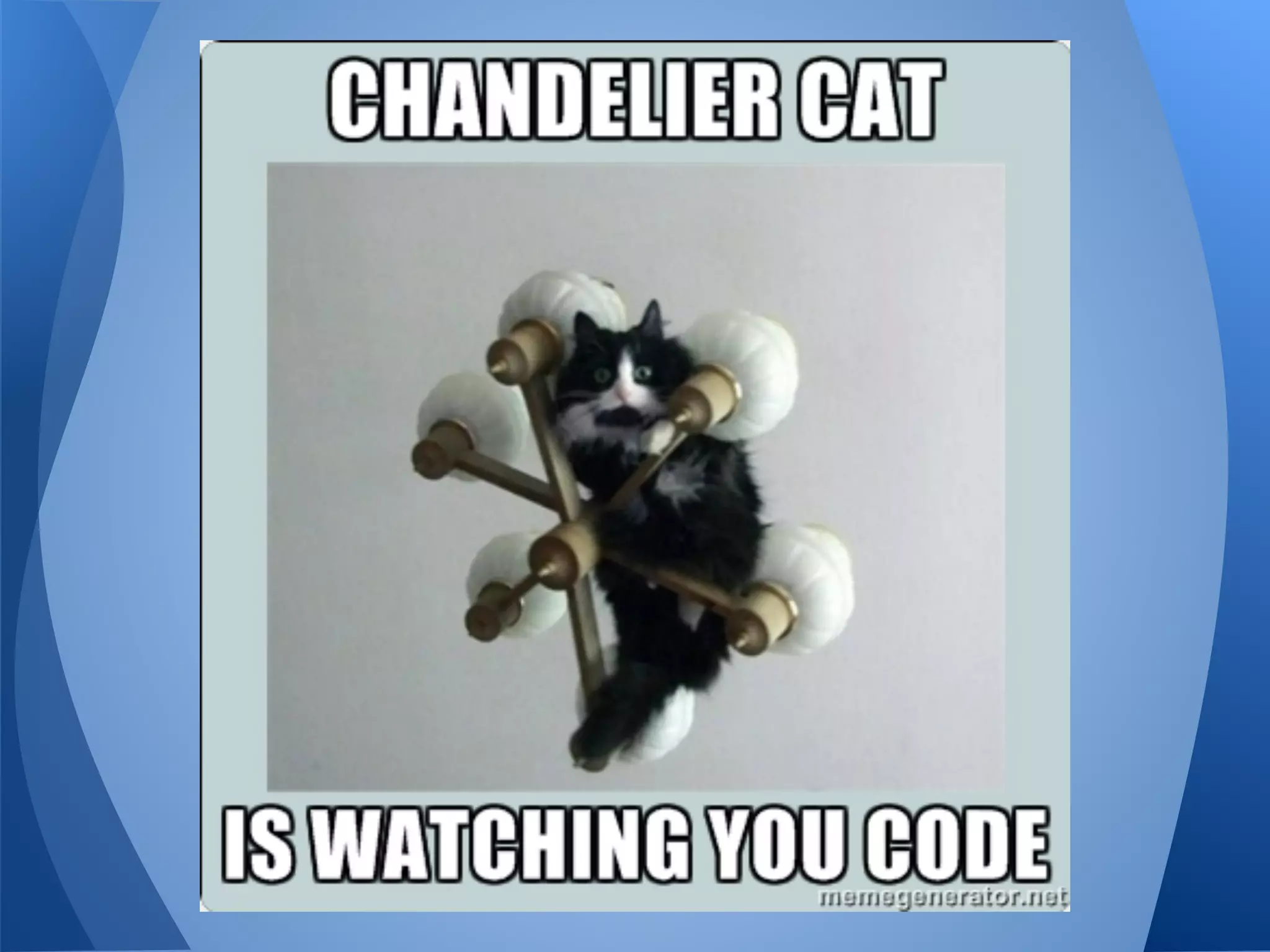
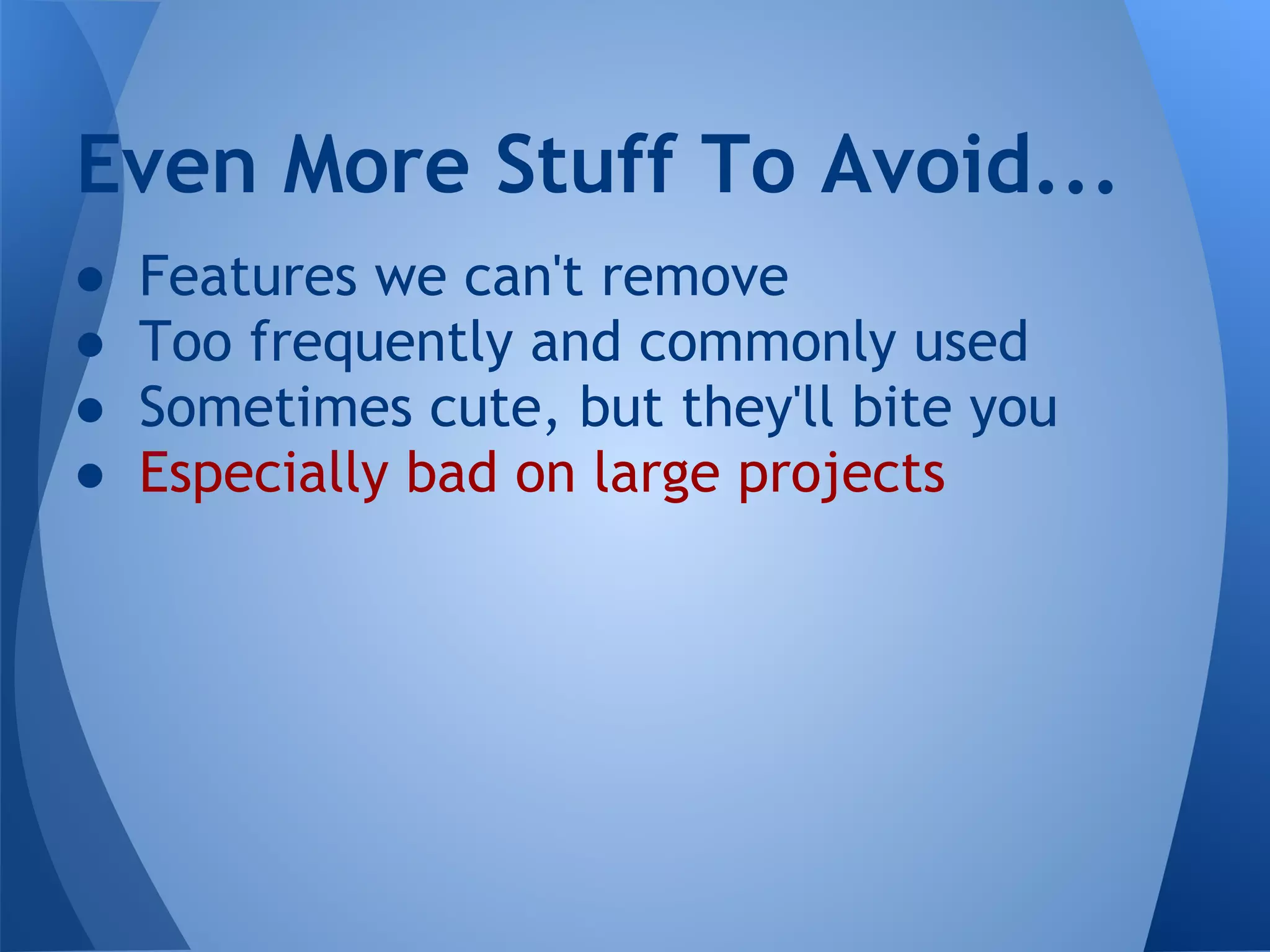




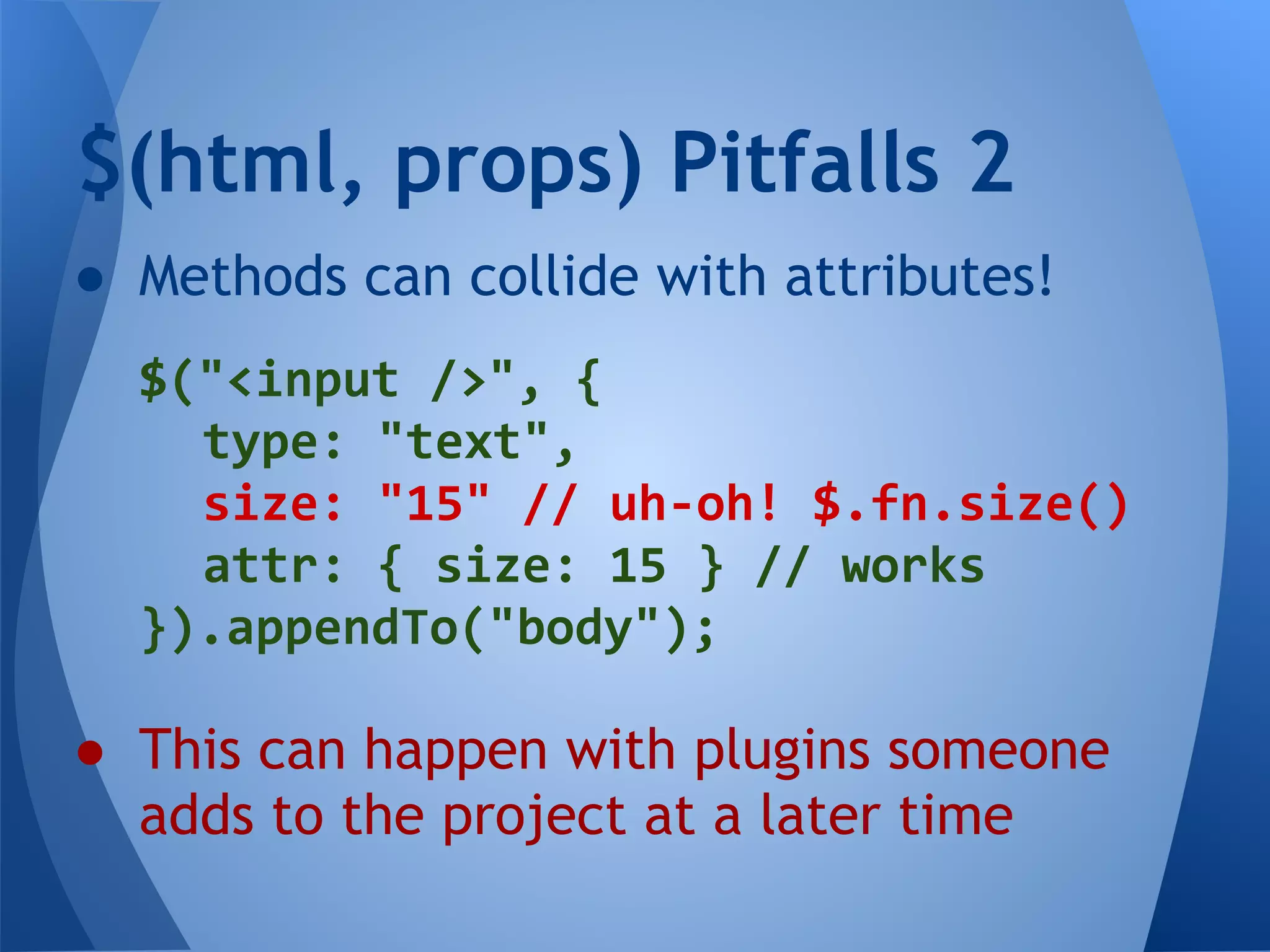

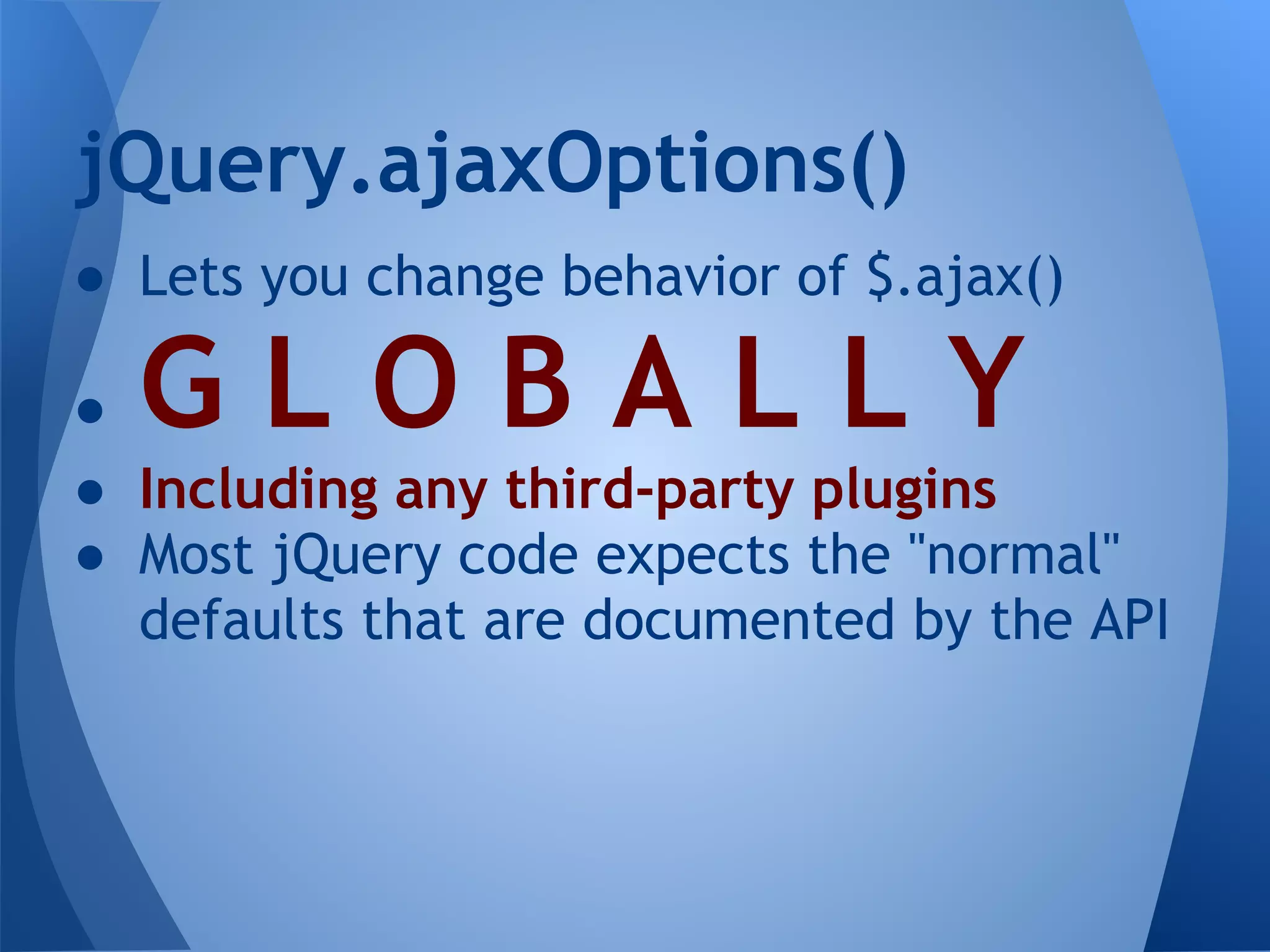
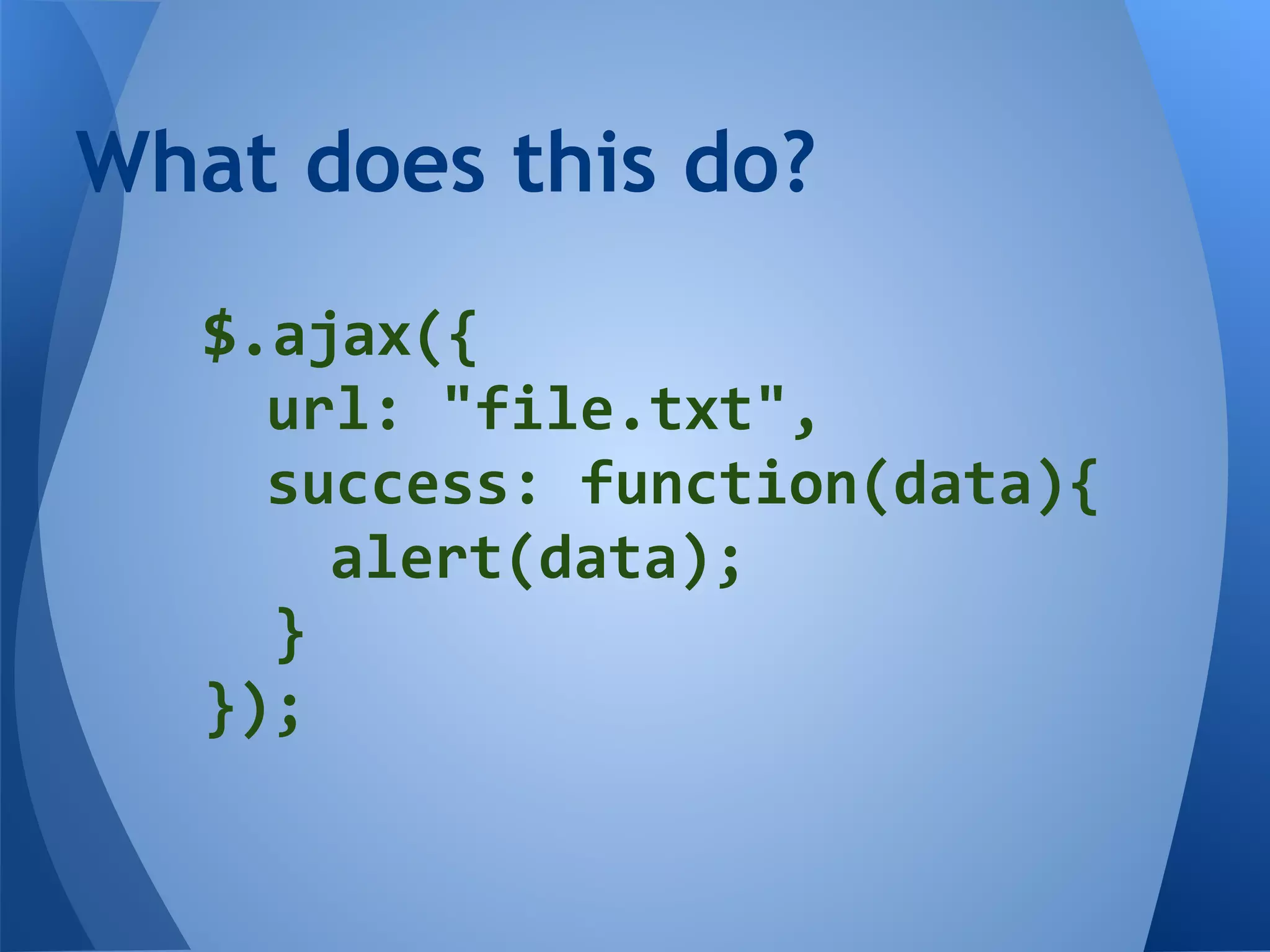
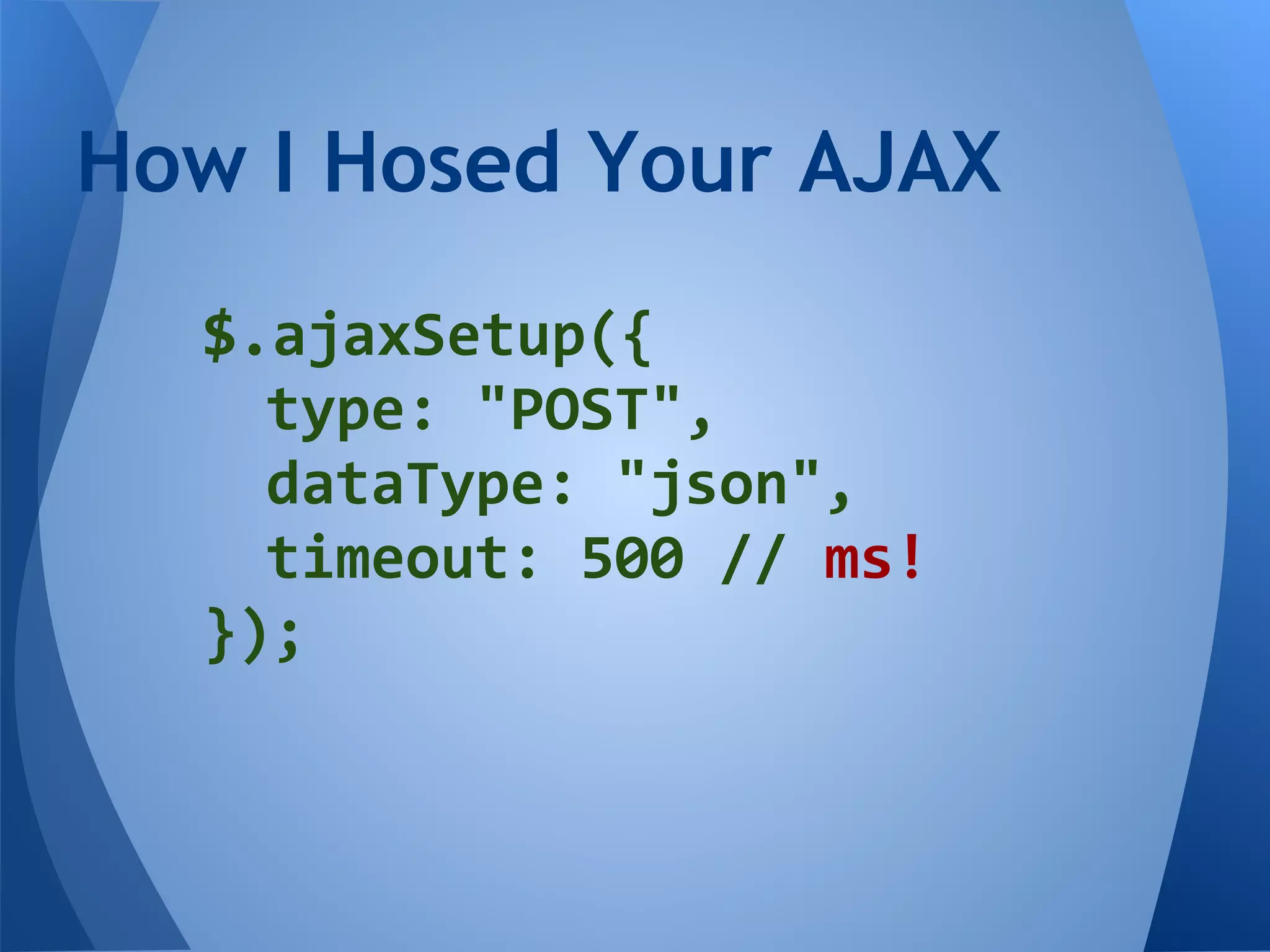

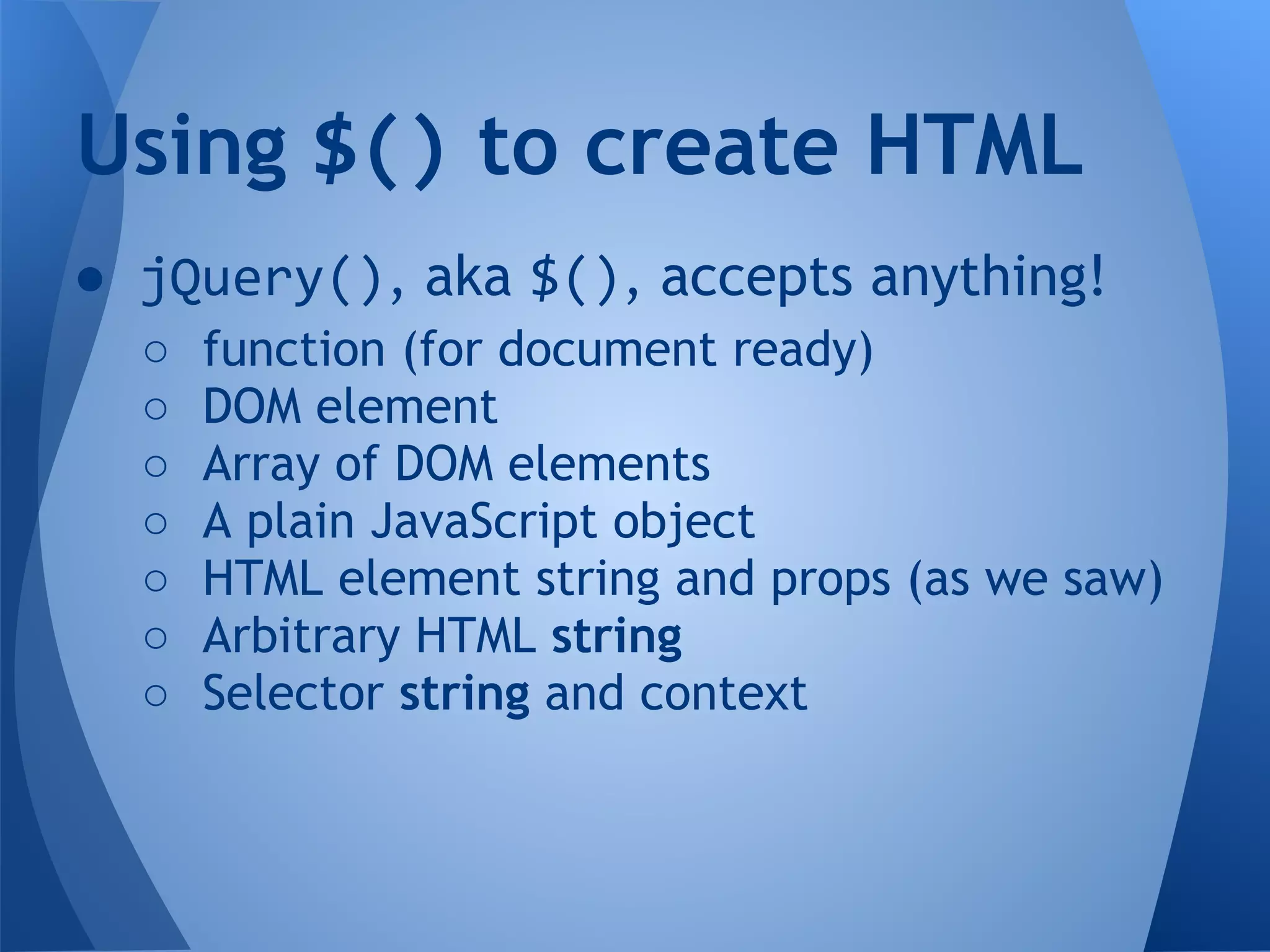
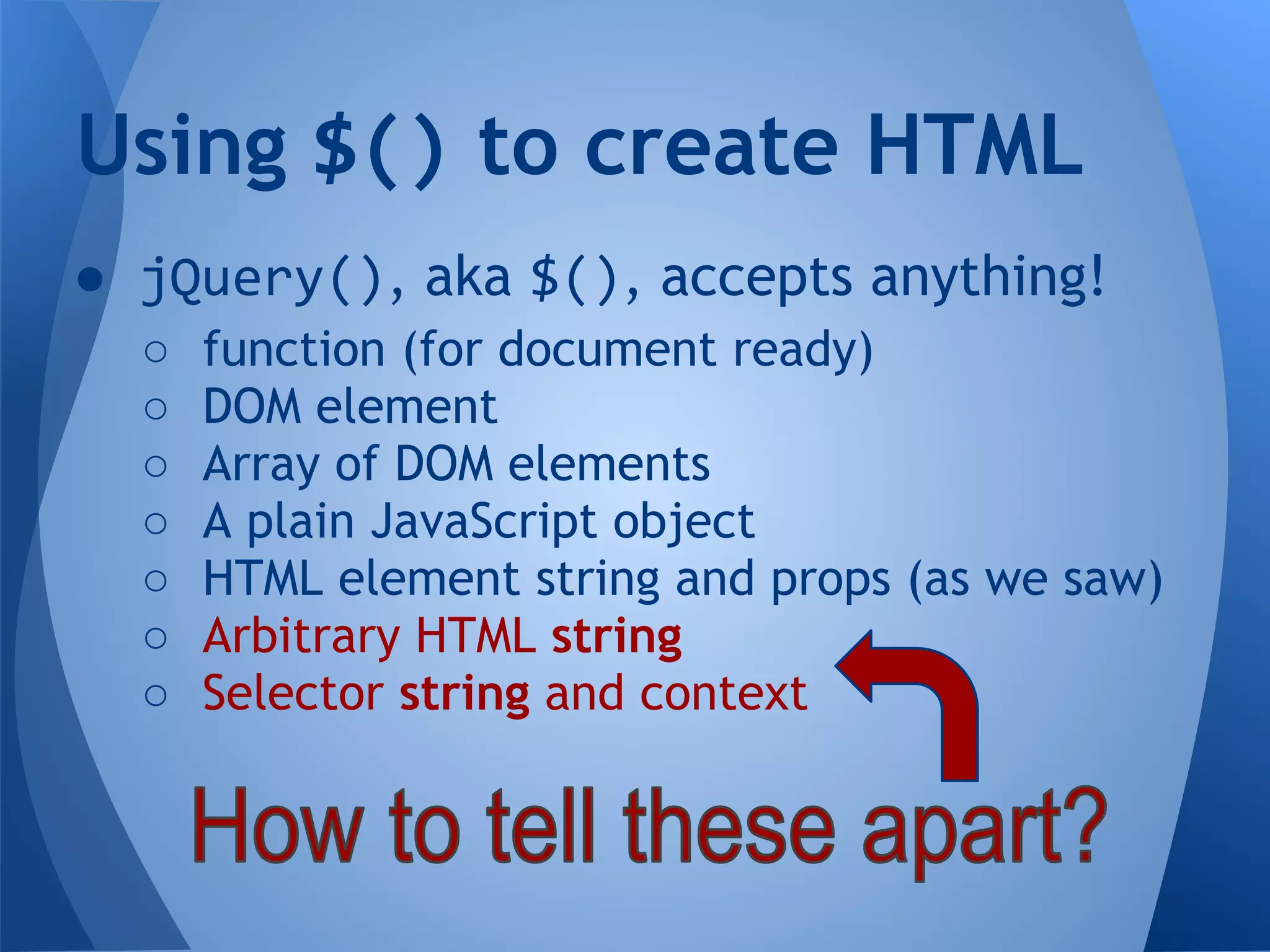
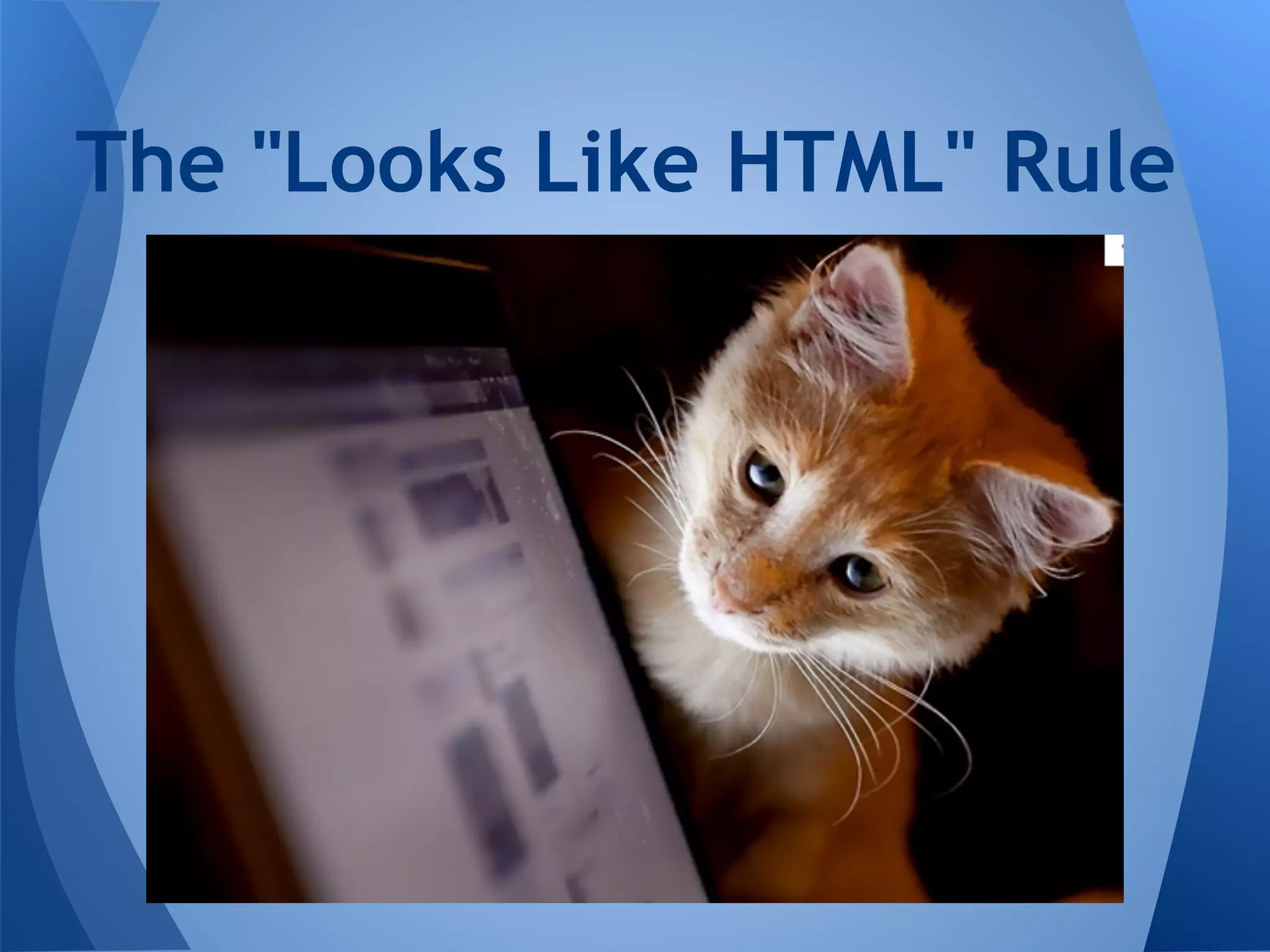
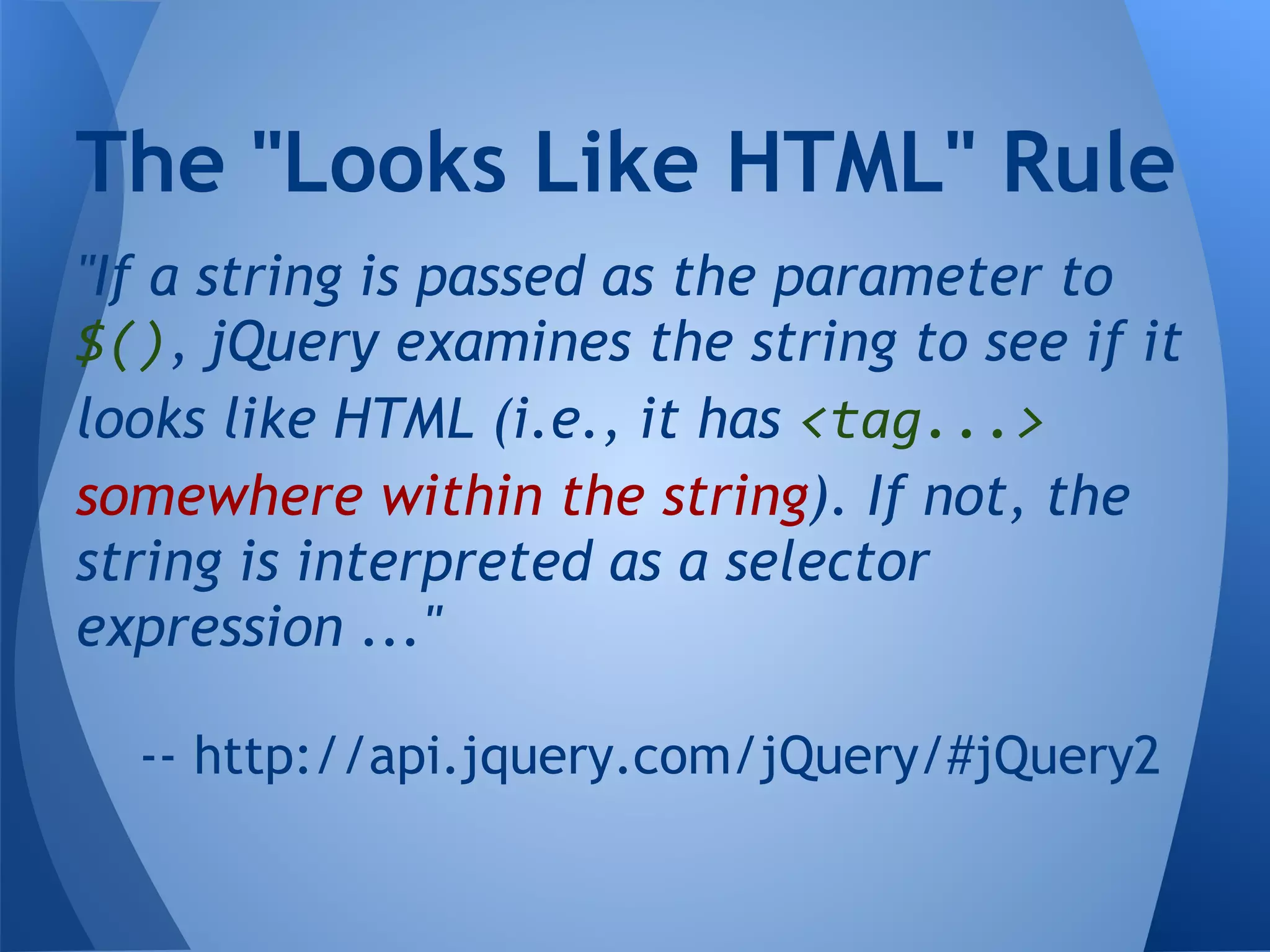
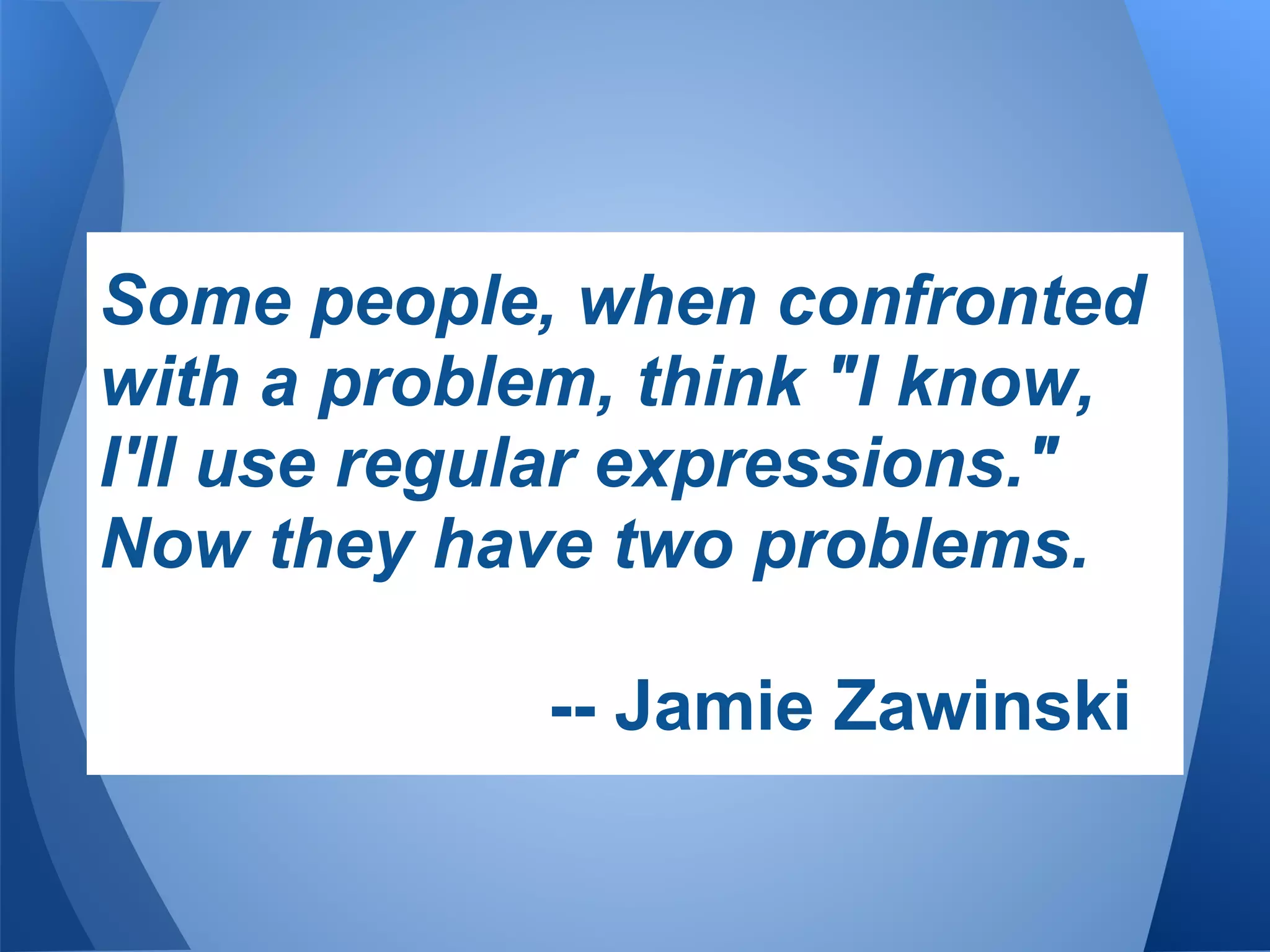
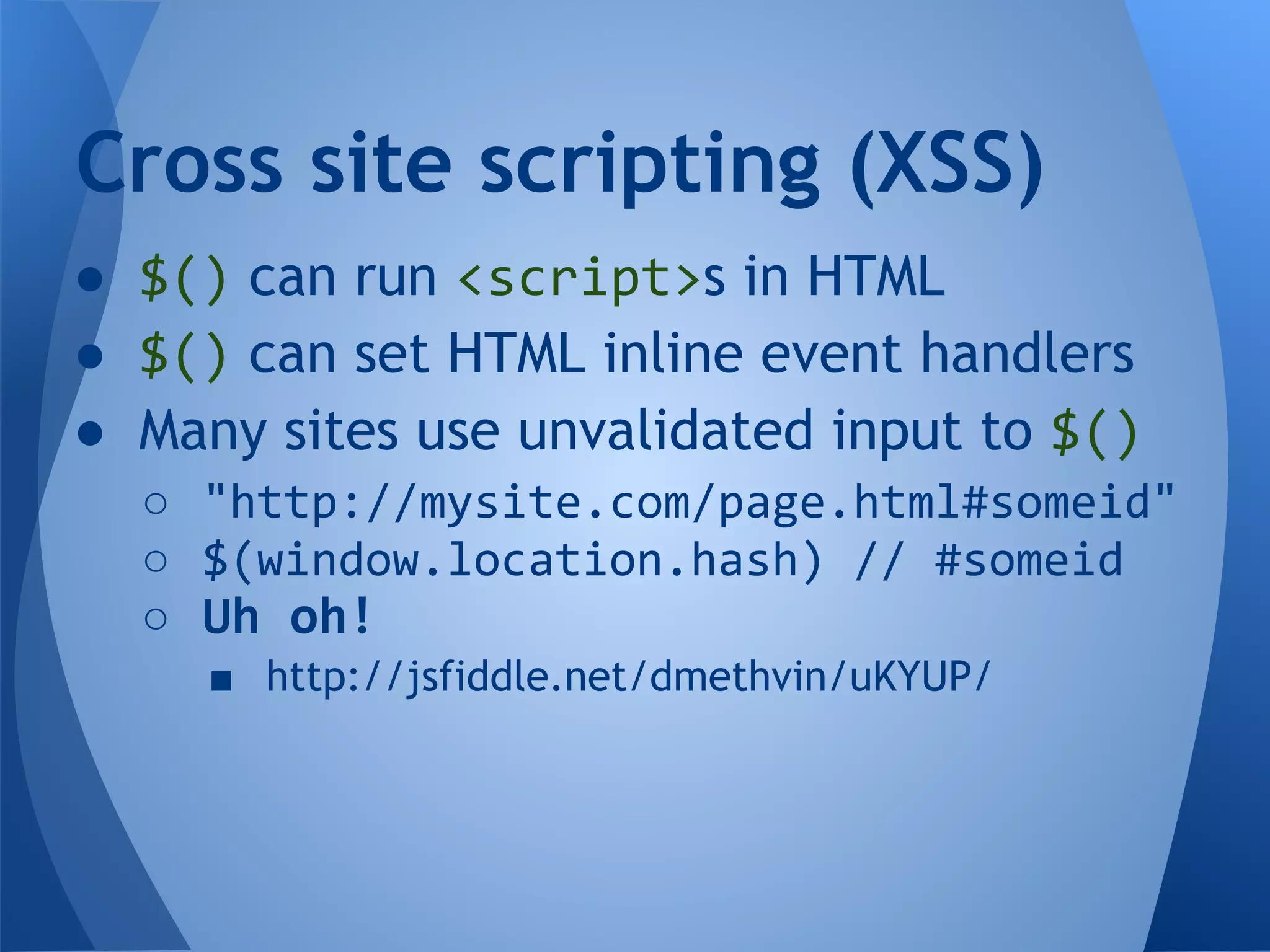
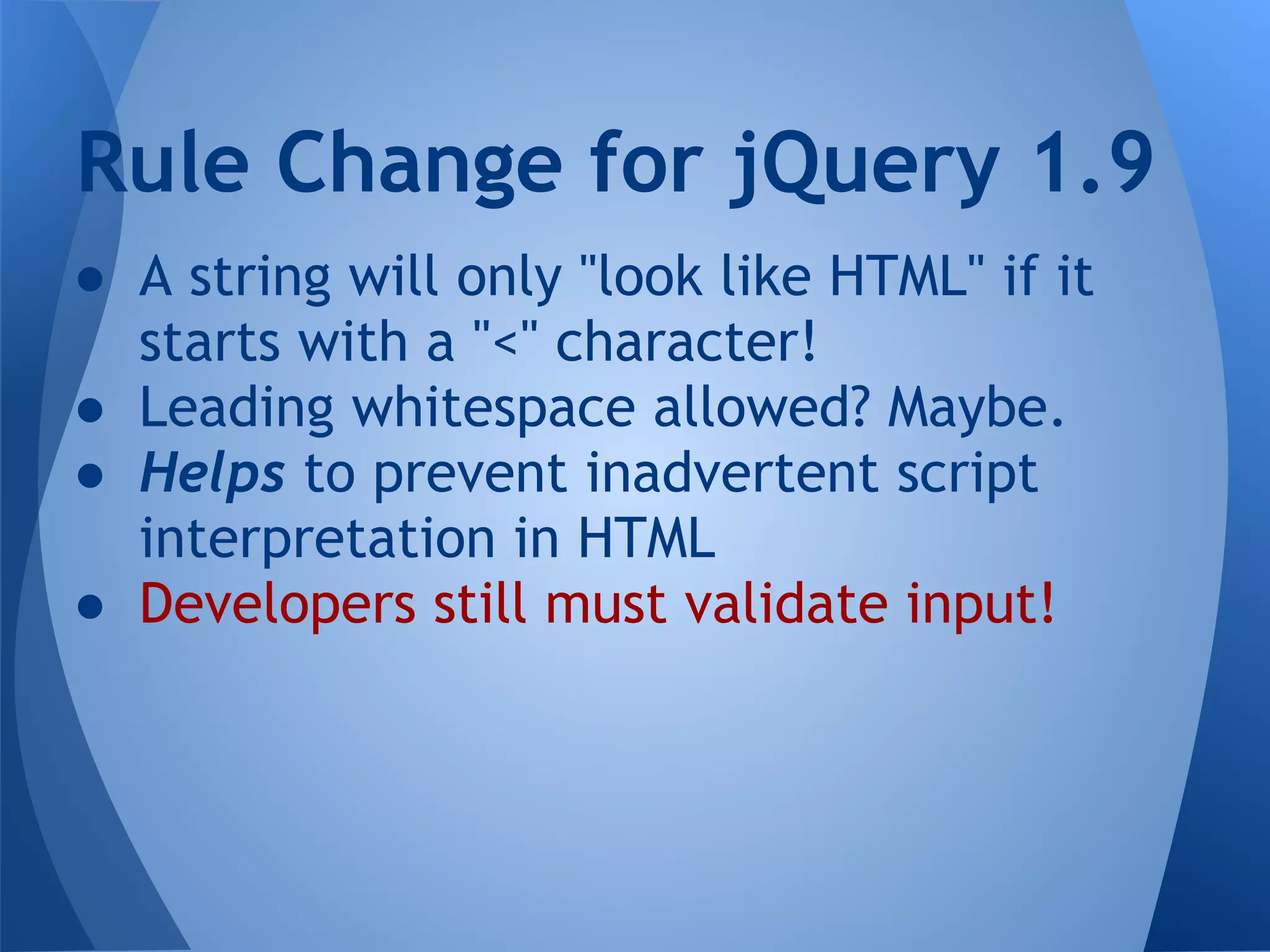
![Selector or HTML in 1.7? 1) "<p>Hello</p>" HTML 2) "Hello<p>there</p> world!" HTML 3) ".tip[title='Hello']" selector 4) ".tip[title='<b>Hello</b>']" HTML 5) "#footer .copyright" selector 6) "#ONE <b>Redskins</b> fan!" HTML](https://image.slidesharecdn.com/jqueryfeaturestoavoid-121115165642-phpapp02/75/jQuery-Features-to-Avoid-42-2048.jpg)
![Selector or HTML in 1.9? 1) "<p>Hello</p>" HTML 2) "Hello<p>there</p> world!" selector 3) ".tip[title='Hello']" selector 4) ".tip[title='<b>Hello</b>']" selector 5) "#footer .copyright" selector 6) "#ONE <b>Redskins</b> fan!" selector Note that many of these are NOT valid CSS selectors and will throw an error.](https://image.slidesharecdn.com/jqueryfeaturestoavoid-121115165642-phpapp02/75/jQuery-Features-to-Avoid-43-2048.jpg)

